Struggling to see the results you want from your copywriting? You could be leaving a lot of money on the table by not testing your sales copy. Take a look at companies like Dell. They’ve increased conversions by 300% with A/B tests.
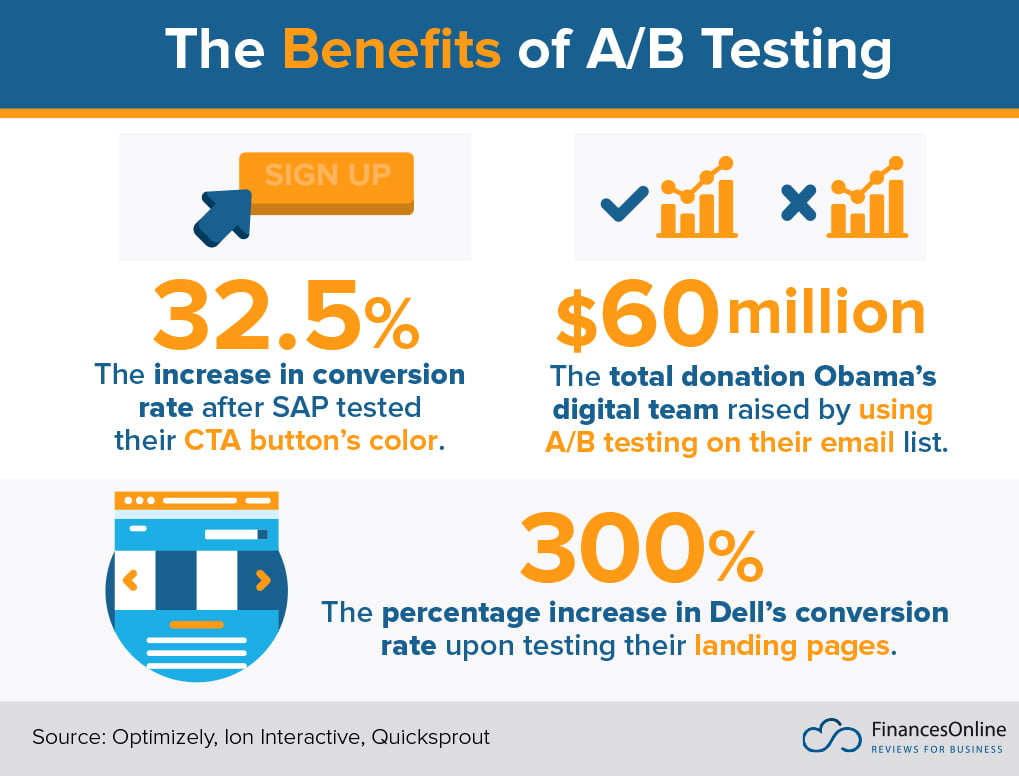
But, don’t worry if you’re not familiar with A/B testing. I’ll explain what it is and how you can create experiments that help find high-performing sales copy in this article.
Explanation of A/B testing
A/B testing is a method of split testing that helps you determine which of two different versions of an ad, landing page, website, or email performs better.
It’s like having two versions of the same page competing against each other to see which one converts more visitors. A/B tests are a great way to optimize your copywriting and increase conversions.
For example, let’s say you have a call-to-action button on your website that says “Sign up now,” and you want to see if changing it to “Get started today” will result in more people signing up for your service.
You can run an A/B test by showing half of the visitors the original version and the other half the new version. Then you can measure which one had higher conversion rates and make changes accordingly.
Why Is A/B Testing Copywriting Important?
A/B testing is essential for refining your copywriting because it helps you understand what works best with your target audience. You don’t have to guess or wonder.
You can experiment with different headlines, images, colors, and calls to action to see which ones increase conversions the most. The results of your tests will give you an idea of how users interact with different elements on a page so you know exactly what to tweak to maximize conversions.
Without A/B testing, you may be blindly making changes that don’t actually improve conversion rates—or worse, decrease them!
Setting Up an A/B test
Next, let’s discuss setting up A/B tests for your sales copy.
Defining Goals and Metrics
Before you run any A/B test, it’s important to set specific goals and metrics to measure success. Your goals should be clear and measurable—for example, you might want to increase the number of email subscriptions or boost sales by a certain percentage.
Your metrics will depend on your goals. You should track metrics such as page views, time spent on the page, clicks, opt-ins, and conversions so you can get an accurate picture of which version is performing better.
Choosing a testing platform
Next, you need to choose a platform for A/B testing copywriting. There are a few different options available, such as Google Optimize. Each platform has its own features and pricing plans, so you should research each one to find the best fit for your business.
Inside Google Optimize, you can create “experiments” and deliver your website users different sales copy and experiences to see which performs better. Start by creating an account.
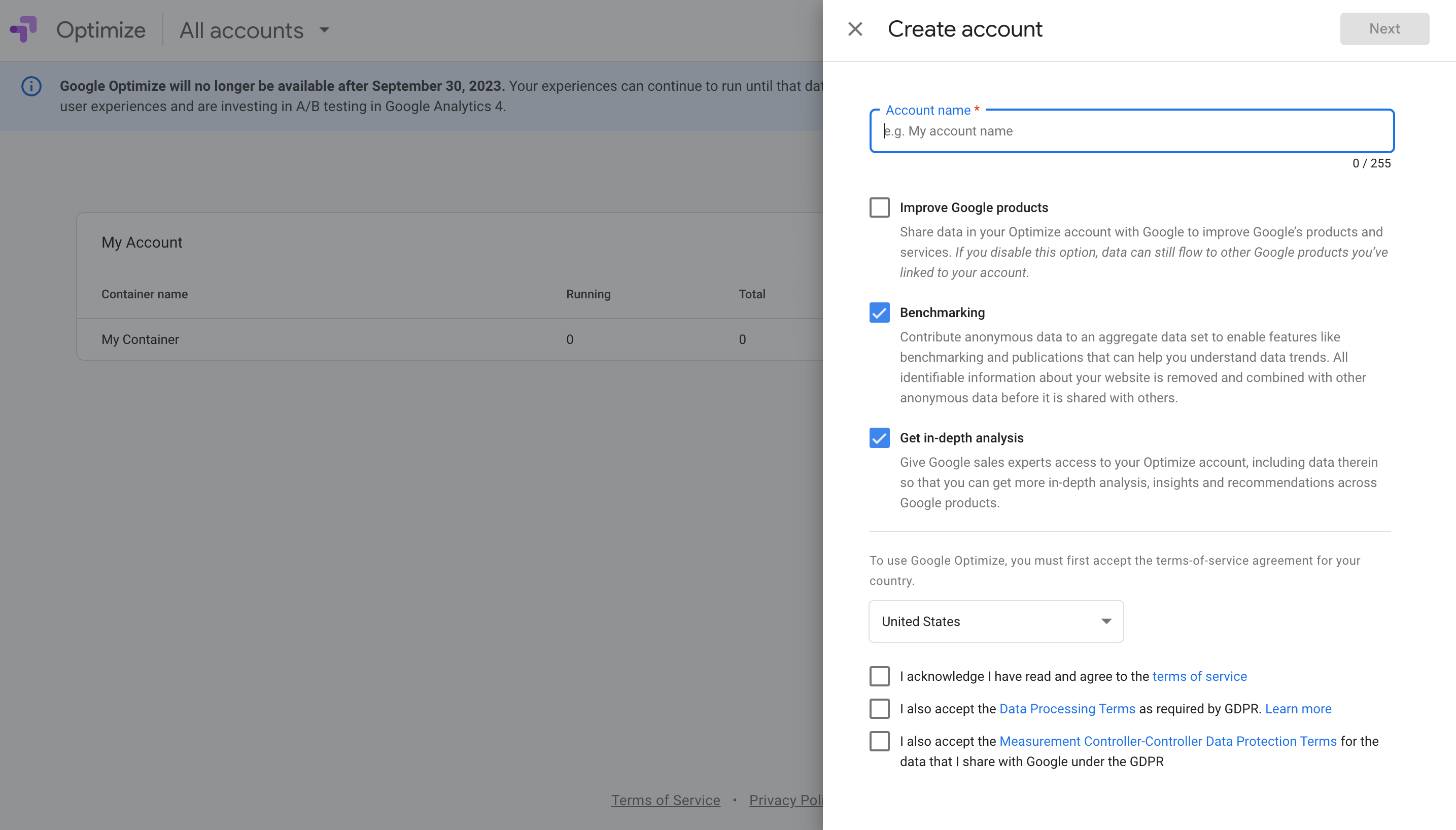
Then, create your first “Experience.”
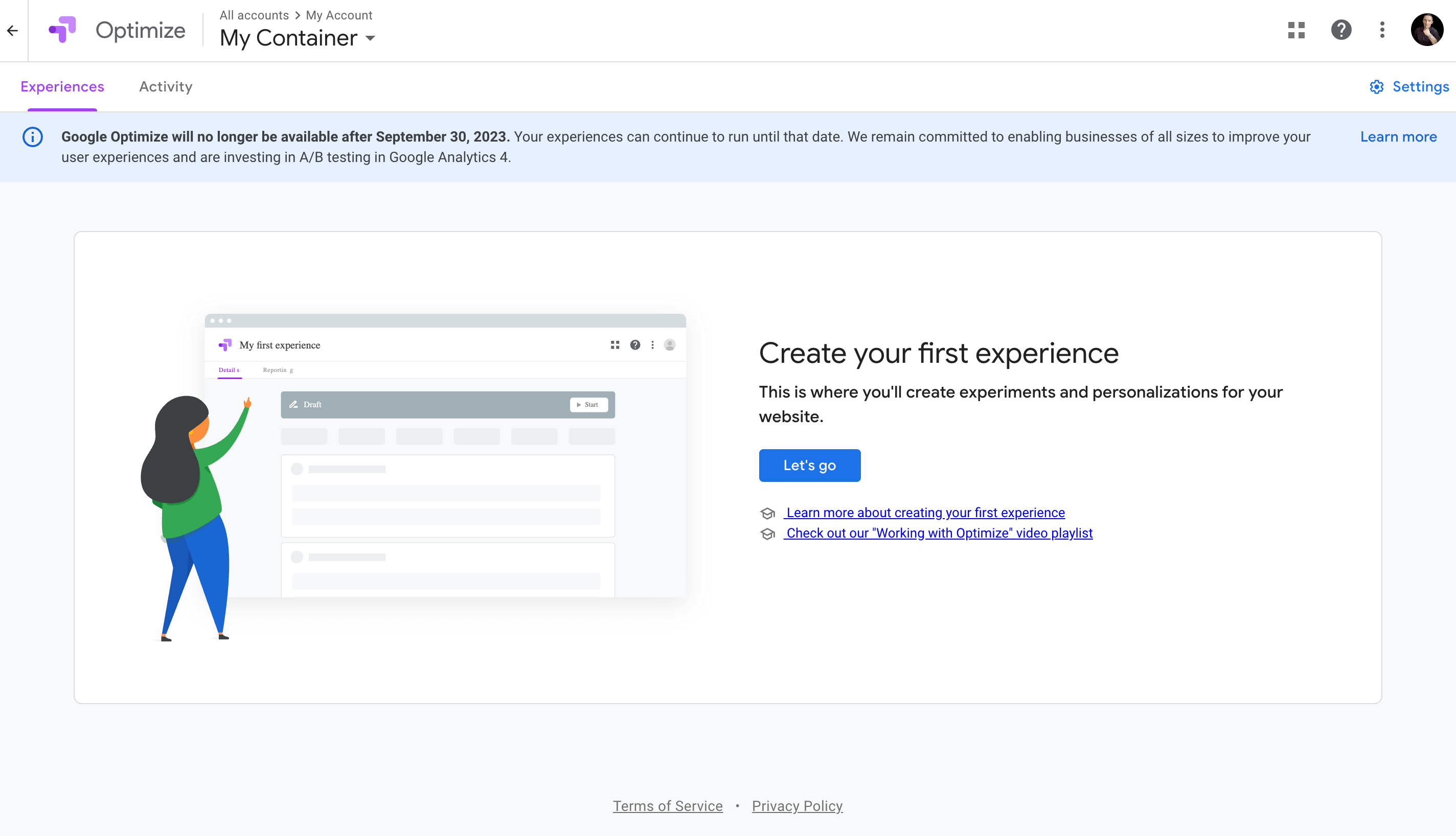
Name your experiment and enter the URL you will be testing on. Choose the “A/B test” option as well.
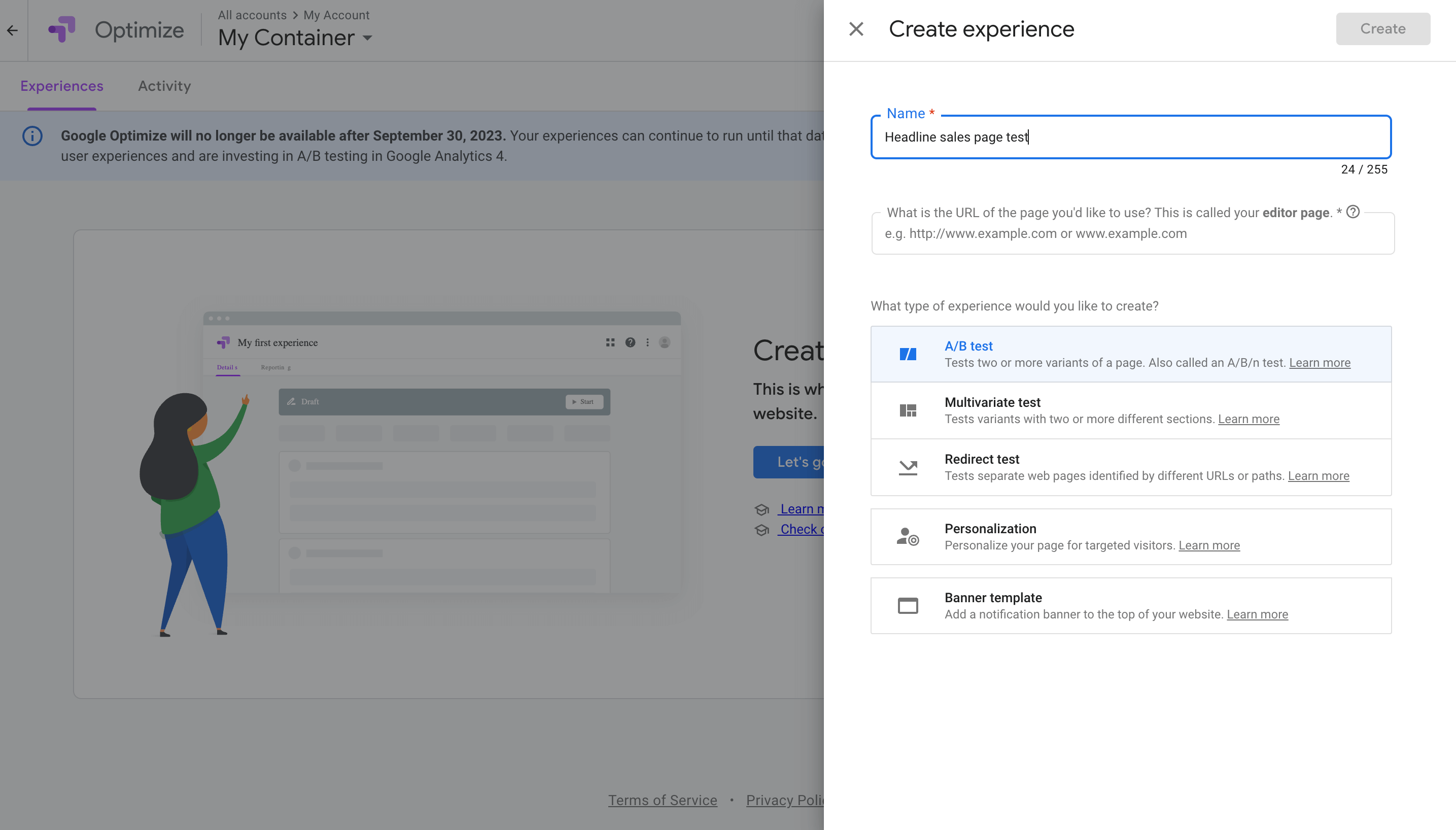
Click “Add variant” to create an element to split test.

Adjust the percentage between the original and the variant. I suggest keeping it 50/50, meaning that 50% of users see the original sales copy and 50% see the new version.

When you click “Edit” on a variant, it will prompt you to download a Chrome Extension that helps you make edits to your existing page.
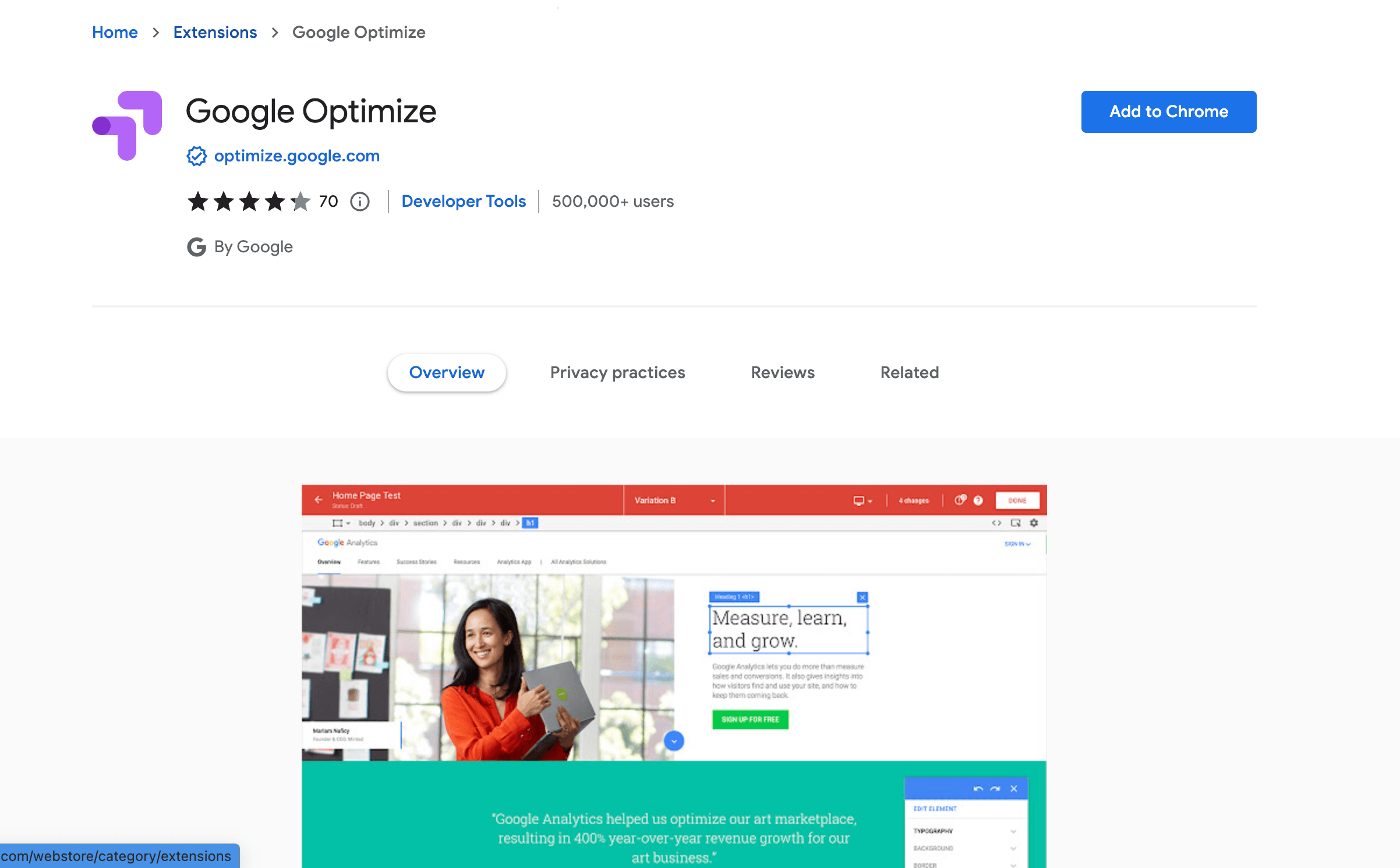
You can then make edits to your web pages for the purpose of split testing. Neat, huh?
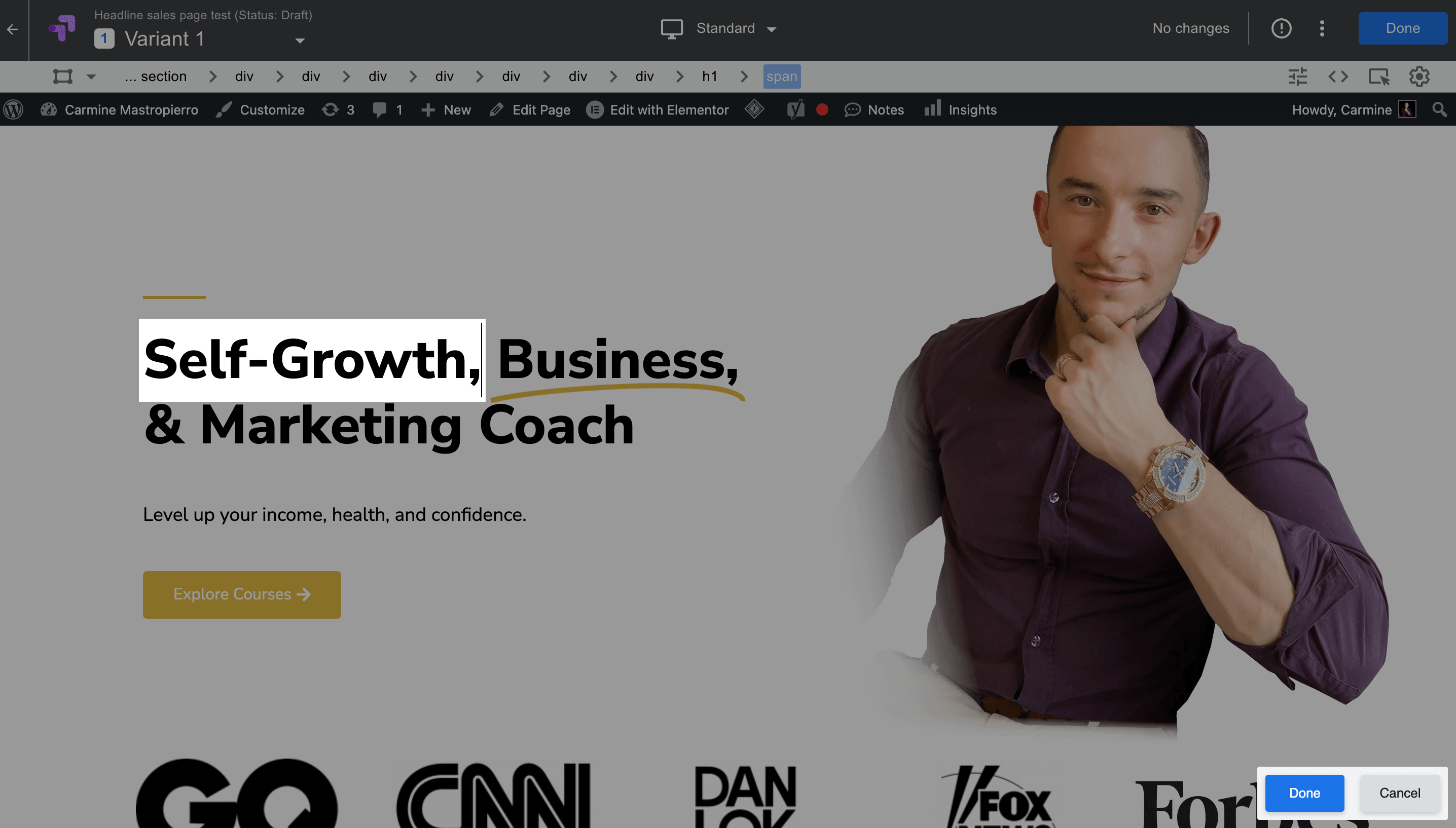
This is how you’ll test headlines, body copy, images, etc. Click “Done” on the bottom right when you’re finished.
Link your Google Analytics account afterward.

Finally, choose an objective, and you can start your experiment! Keep an eye on performance under “Reporting” and inside Google Analytics to see how your new sales copy is doing.
Testing Variables
Never stop testing. You should consistently experiment with things like body copy, headlines, images, colors, and calls-to-action buttons on both desktop and mobile devices.
For example, you might have two different versions of your headline—one that ’s more descriptive, and one that’s shorter and punchier. You can also test different colors for your call-to-action button or different images on the page.
It’s important to test only one variable at a time, so you know exactly what is causing the variation in results. If you change too many things at once, it will be hard to pinpoint which element had an impact on conversions.
That brings me to my next point.
A/B testing Copywriting Elements
These are the elements I recommend experimenting with when conducting split tests.
Headlines
Your headline is the first thing users will see, so it should be catchy and grab their attention. Try testing different headlines to see which one resonates with your audience more. You can keep the same content but vary the length of the headline or use different words to make it stand out.
GrooveHQ, a helpdesk software company, increased conversions by over 100% by split testing their design and sales copy.
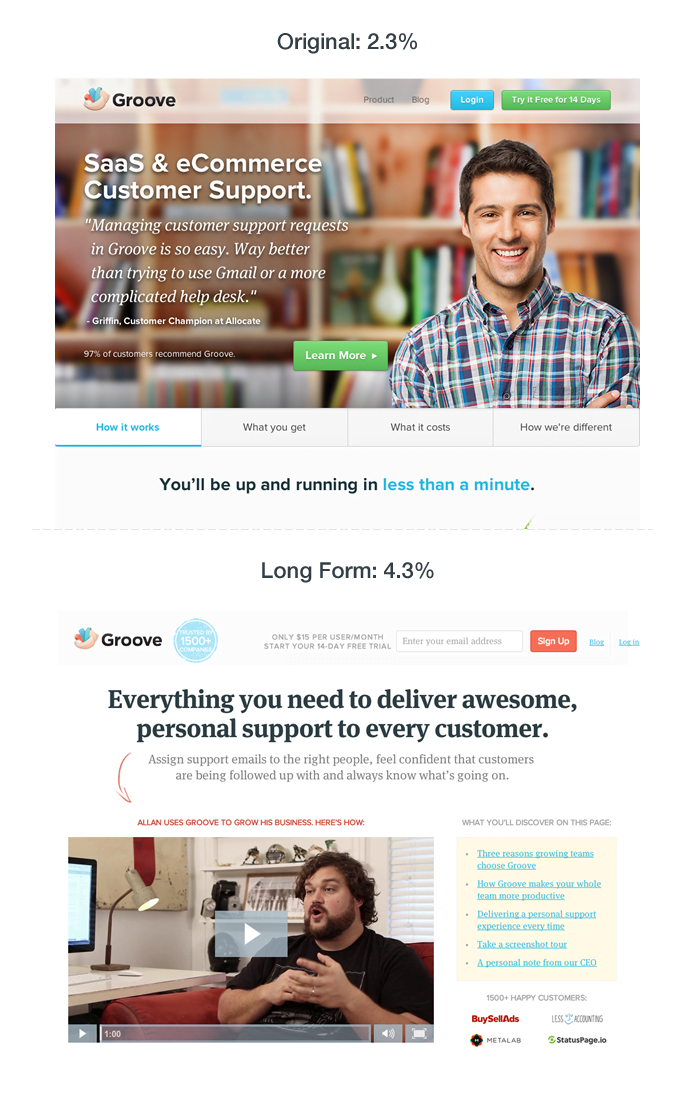
Hooks and Introductions
Next, you can test different hooks to see what keeps readers longer on the page and converts more. Introductions are also important to include in your copy, so users know what the page is about. Try different styles of writing, such as stories, statistics, or jokes, to see which one works better for your audience.
Calls-to-action
Your calls-to-action (CTAs) should be persuasive and encourage people to take action. You can experiment with different colors, shapes, and sizes for your CTA buttons to find out which ones work best for you. Also, test different wording on the button, like “Sign Up Now” versus “Learn More.”
An interesting example is the healthcare insurance company Humana. This was the original version of a banner ad they were running:

Frankly, it had too much text and was difficult to understand for the average consumer.
By making the message more concise and changing the call to action, they raised their click-through rate by 433%!

Remember, simple sells.
Body copy
You can A/B test the entire main message of your advertisement or page. Experiment with different stories, features, benefits, and overall ways of positioning the offer. Try short versus longer sales copy too.
Images and visuals
The images and visuals you use also play a big role in conversions. Try different pictures, as well as size, quality, and color. You can also test videos instead of images to see how users respond.
Pricing
Pricing and how you position the price of a product play a big role in conversions and persuading customers to buy. That’s why you should A/B test pricing itself and sales copy explaining why the product or service is worth that amount.
Social proof
Finally, consider testing different forms of social proof like testimonials, reviews, comparisons, and case studies. You can also A/B test where you place these elements, such as above the fold or near the bottom of the page.
Analyzing A/B Test Results
Alright, once your tests have run for long enough, analyze the results carefully to determine which version performed better. Make sure to use your metrics, such as conversions or leads, when analyzing the data.
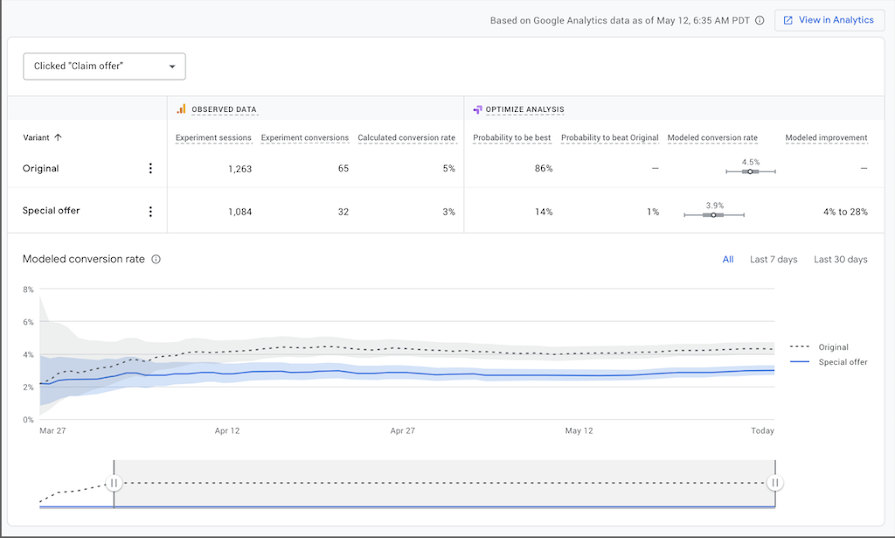
You can also ask yourself questions like: Did users stay on my page longer with a certain headline? What color button converted more users? Were people more likely to purchase after reading testimonials? This will help you draw conclusions and form insights about what works best for your business.
Applying A/B Test Findings to Improve Copywriting and Marketing
Once you have determined which copy performed better, incorporate them into your current and future campaigns. This will help ensure that you are always delivering the most optimized message to your users.
You can also use your findings for other channels and strategies. For example, if you find that certain calls to action work well for Facebook Ads, try them on Google or social media.
The testing doesn’t stop once you get results, though. You should always be testing and optimizing your copywriting to ensure you’re delivering the best message possible. This will help keep your conversions up, no matter what changes take place in your industry or market.
Best Practices For A/B Testing in Copywriting
Now, let me jump into best practices for when you conduct A/B tests.
Test One Element at a Time
The key to successful A/B testing is to test one element at a time. This will ensure that you get accurate results and can draw insights from them. If you test multiple things at once, you might now be able to get a good understanding of what worked and why.
Collecting Enough Data
A/B testing isn’t something you can do for a few days and expect to get accurate results. You need to run tests for a sufficient amount of time before drawing conclusions. Try running the tests for at least two weeks or more, depending on your traffic volume.
Be Sure to Review Regularly
Finally, be sure to review the test results regularly so you can make changes if needed. A/B testing copywriting is an ongoing process and requires adjustments in order to maximize conversions and keep your messaging up-to-date with customer needs and expectations.
Wrapping Up A/B Testing in Copywriting
A/B testing copywriting doesn’t have to be difficult. By following the steps outlined above, you can easily split test your content to ensure that your campaigns are delivering maximum conversions. With a bit of practice, you’ll be well on your way to mastering A/B testing and optimizing your copywriting for success.
Here’s a recap of today’s article:
- A/B testing is the process of experimenting between different versions of your sales copy to determine which performs better.
- You can use tools like Google Analytics, Google Optimize, and Hotjar to create split tests and measure performance.
- Split test headlines, hooks, calls to action, images, body copy, pricing, and similar elements.
- Test one or as few elements at one time to generate more accurate data.
- Continually test your sales copy even after discovering winners.
Want to master copywriting and get mentorship from me? Explore my online courses.














